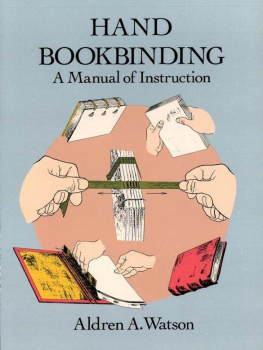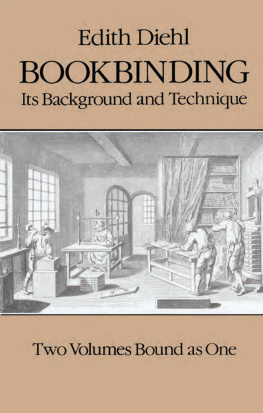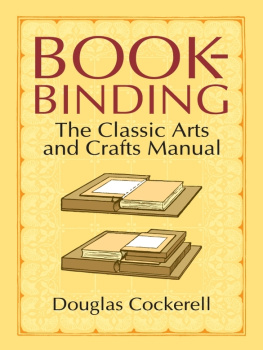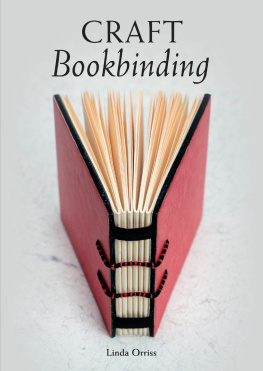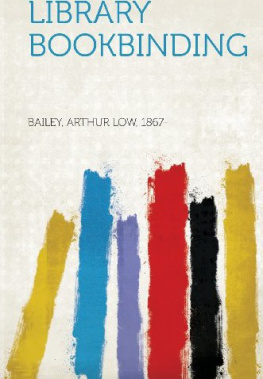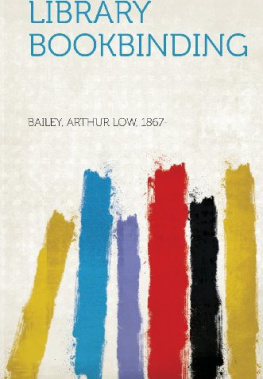Aldren A. Watson - Hand Bookbinding
Here you can read online Aldren A. Watson - Hand Bookbinding full text of the book (entire story) in english for free. Download pdf and epub, get meaning, cover and reviews about this ebook. year: 2012, publisher: Dover Publications, genre: Home and family. Description of the work, (preface) as well as reviews are available. Best literature library LitArk.com created for fans of good reading and offers a wide selection of genres:
Romance novel
Science fiction
Adventure
Detective
Science
History
Home and family
Prose
Art
Politics
Computer
Non-fiction
Religion
Business
Children
Humor
Choose a favorite category and find really read worthwhile books. Enjoy immersion in the world of imagination, feel the emotions of the characters or learn something new for yourself, make an fascinating discovery.
- Book:Hand Bookbinding
- Author:
- Publisher:Dover Publications
- Genre:
- Year:2012
- Rating:4 / 5
- Favourites:Add to favourites
- Your mark:
- 80
- 1
- 2
- 3
- 4
- 5
Hand Bookbinding: summary, description and annotation
We offer to read an annotation, description, summary or preface (depends on what the author of the book "Hand Bookbinding" wrote himself). If you haven't found the necessary information about the book — write in the comments, we will try to find it.
Hand Bookbinding — read online for free the complete book (whole text) full work
Below is the text of the book, divided by pages. System saving the place of the last page read, allows you to conveniently read the book "Hand Bookbinding" online for free, without having to search again every time where you left off. Put a bookmark, and you can go to the page where you finished reading at any time.
Font size:
Interval:
Bookmark:
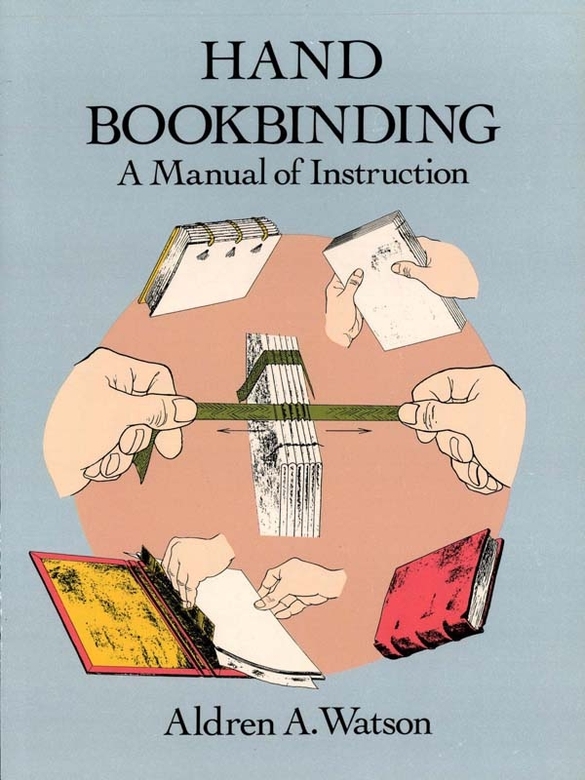
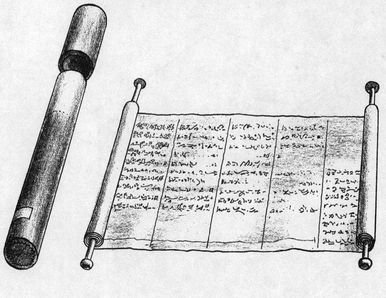
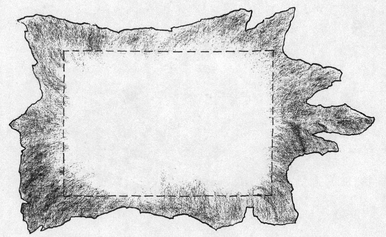
Paradoxically, the history of bookbinding begins many hundreds of years after the appearance of the first book, one of the earliest examples of which is an Egyptian papyrus roll composed of eighteen columns of hieratic writing, dating from the twenty-fifth century B.C. and stored in a tube binding (1). The roll form (from the Latin volumen, roll of writing) continued well into the Christian era, when parchment gradually replaced papyrus as a writing material. The arrangement of the writing in parallel columns separated by vertical lines held the potential for the development of an entirely new form. Eventually the idea of cutting the roll into a number of flat panels, each holding three or four columns, inspired a binding that was more convenient to use and that would prove to be more durable.
The first bound book was made up of single sheets hinged along one edge by means of lacing or sewing. In the Latin codex or manuscript book, the columnar arrangement was continued, with typical examples from Roman times having three or four columns to the page. Down to the present day, two- and three-column pages have been in common use, particularly in reference books and textbooks in which short lines contribute to easier reading. Partly for the sake of legibility, modern trade books are predominantly single column and consequently of a smaller trim size than books of earlier times.
Early bindings exhibit all the basic construction elements that characterize modern bindings. They were made up of folded sheets collected into gatherings, or signatures, and sewn onto cords running across their backs. The pages of these books were large, probably much influenced by the size of the animal skins from which the parchment was made (2). Subsequently, wooden boards were placed on either side of the sewn signaturesbut not attached to themin positions corresponding to the front and back covers, to protect the books pages. At some later time it was discovered that the cords to which the signatures were sewn could as easily be laced directly into the edges of the boards to form a more compact and durable unit (3). The fundamental evolution of bookbinding was completed when the whole volume was covered with a sheet of leather to conceal the cords and sewing, to reinforce the hinges, and to provide protection and permanence (4).
The development of bookbinding is both simple and complex. In the past eighteen hundred years the basic construction of the book has not changed, as an examination of a contemporary binding will show. It is still a series of signatures sewn one to the other at the folds and secured between two boards whose outer surfaces are covered. Just as the perfection of any technique cannot proceed in isolation from other factors, bookbinding has been influenced by many events having nothing directly to do with books or even literature.
The early monastic orders were the guardians of nearly all knowledge in the Middle Ages, with respect to both writing and scholarship. Thus it is not surprising that the same persons to whom these skills were entrusted also assumed the role of bookbinders. Their craftsmanship reflected a thoroughness of education available to only a privileged minority. Hence the beginnings of bookbinding are associated with the church, with ecclesiastical history and literature, and with manuscript reference books.
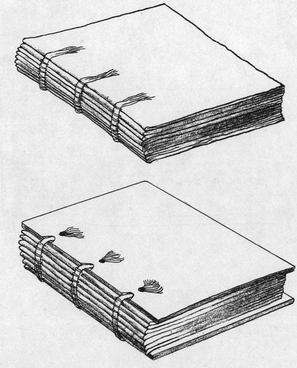
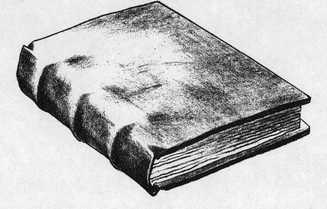
The large size of early manuscript writing (5) was governed by the writing tool itself and demanded a generous page size, while the considerable thickness of the handmade paper was mostly what contributed to the bulk of the bound book. Letter by letter, each word, line, and page was patiently handwritten and usually enhanced with flourished initials illuminated in brilliant colors. The bindings were of leather, their large boards inviting decoration. There are countless examples with richly tooled designs combined with settings of gems, rare stones, and heavy gold leaf (6). As a further embellishment, engraved gold clasps or latches were attached to the boards to hold them closed. Working with good materials and virtually unlimited time, the monastery binders produced work of uncompromising quality and durability. These ceremonial reference books were quite literallythen as noworiginal works of art, intended for the use of only a select few people. Quite apart from their content and visual beauty, perhaps their greatest value lay in the impossibility of replacing them, for many of these limited editions would have been copied from equally unique volumes borrowed with difficulty from another library at a great distance. Needing to be carefully guarded, in the monastery library these rare books were hitched by chains to the shelves or reading tables.
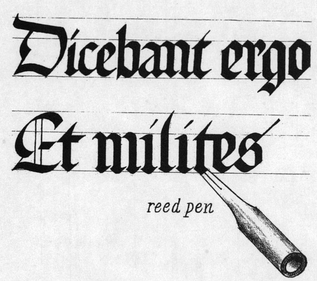
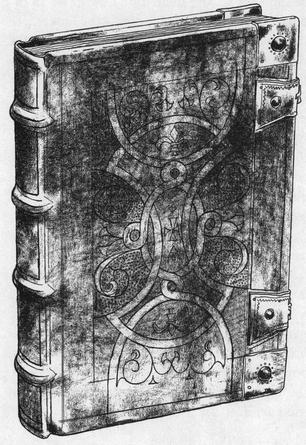
Bookbinding was also affected by the art of papermaking, which was introduced to Europe from China in the tenth century. Sheets of this new handmade material approximated the weight of parchment, but they could be folded, pierced, and sewn with greater ease. As the knowledge of papermaking spread, it was found that the large sheets of this new material need not always be used as a single fold, or folio size (7). Paper was pliable enough to withstand being folded several times without damage. Two folds produced the 9 x 12-inch quarto page, and three made a 6 x 9-inch octavo comprising eight leaves, or sixteen pagesa size corresponding closely to the average trim size of a modern book. This readily available material, coupled with an awakened interest in more books on a broadening range of subjects, set the stage for a new phase in the development of bookbindingthe advent of the block book, in which both the text and the illustrations for each page were cut in relief on blocks of wood, one block for each page. Scores of identical impressions could be printed from the blocks, and the blocks could be safely stored and reprinted as required. Although infinitely faster than making duplicate copies one at a time with a reed pen, the task of cutting thousands of individual letters in wood was still enormously tedious.
A development amounting to a revolution came in the fifteenth century with the perfection by Johann Gutenberg of printing from movable type. By this process of composing words from individual type letters, an entire page could be set and hundreds of impressions printed in a relatively short time. Moreover, once the edition of a page had been printed, the type could be sorted, or distributed, and used again to set another page.
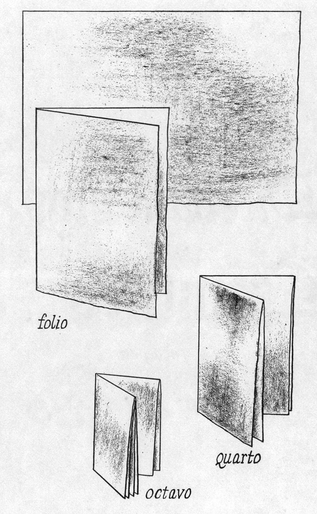
Font size:
Interval:
Bookmark:
Similar books «Hand Bookbinding»
Look at similar books to Hand Bookbinding. We have selected literature similar in name and meaning in the hope of providing readers with more options to find new, interesting, not yet read works.
Discussion, reviews of the book Hand Bookbinding and just readers' own opinions. Leave your comments, write what you think about the work, its meaning or the main characters. Specify what exactly you liked and what you didn't like, and why you think so.


